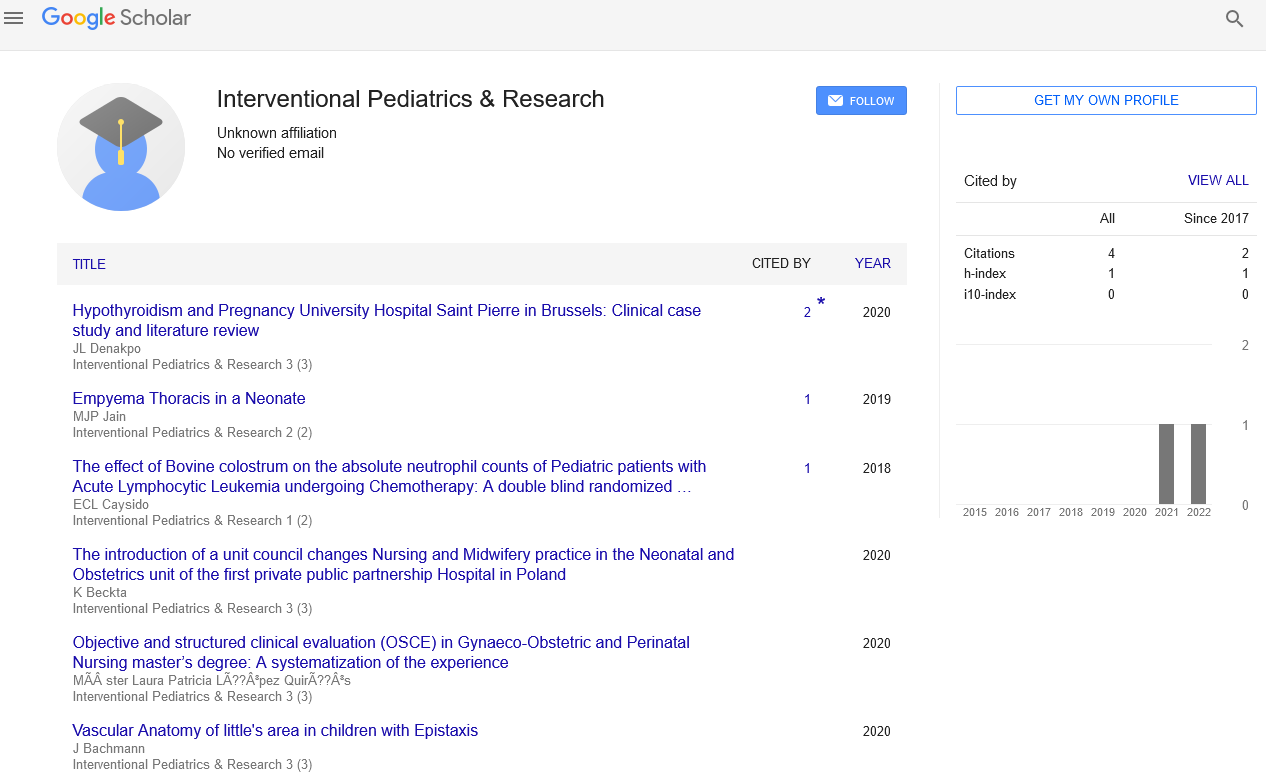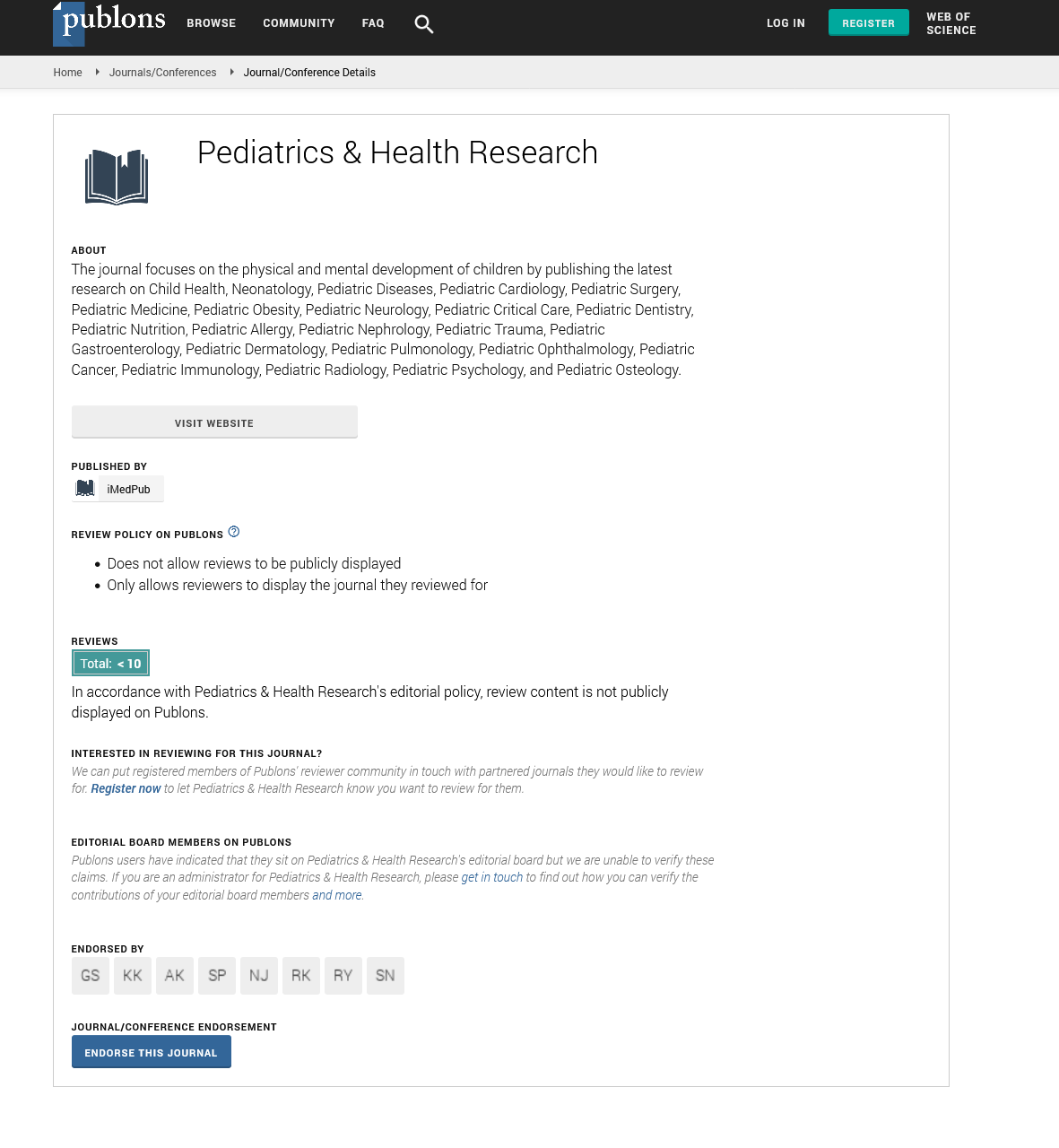Editorial - Interventional Pediatrics & Research (2023) Volume 6, Issue 3
the Long-Term Outcomes of Acute Myocardial Infarction in Pre-Existing Coronary Artery EctasiaA Systematic Review and Meta-Analysis of
Jaydeep Bhalal*
Department of Medicine, Johns Hopkins University, Baltimore
- *Corresponding Author:
- Jaydeep Bhalal
Department of Medicine, Johns Hopkins University, Baltimore
E-mail: jaydeep23@gmail.com
Abstract
Coronary artery ectasia (CAE) refers to the dilation or aneurysmal formation of coronary arteries. Acute myocardial infarction (AMI) occurring in the presence of CAE poses unique challenges in terms of diagnosis, management, and long-term outcomes. This systematic review and meta-analysis aim to assess the long-term outcomes of patients with CAE who experience an AMI.This systematic review and meta-analysis provide insights into the long-term outcomes of acute MI in patients with pre-existing CAE. The results indicate that patients with CAE have an increased risk of recurrent MI, all-cause mortality, and MACE compared to those without CAE. These findings underscore the importance of close monitoring, appropriate risk stratification, and tailored management strategies for this high-risk population. Further research is warranted to explore the underlying mechanisms and develop targeted interventions to improve the prognosis of patients with CAE and acute MI.
Keywords
Acute myocardial infarction • Coronary artery ectasia • Long-term outcomes • Major adverse cardiac events • Meta-analysis • Systematic review
Introduction
Coronary artery ectasia is a rare but clinically significant condition characterized by localized or diffuse dilation of the coronary arteries [1]. The association between CAE and AMI has been a subject of interest due to the potential impact on patient outcomes [2]. Understanding the long-term prognosis of AMI in patients with pre-existing CAE is crucial for optimizing management strategies and improving patient care [3,4].
Methods
A comprehensive literature search was conducted using electronic databases to identify studies reporting on the long-term outcomes of AMI in patients with pre-existing CAE [5]. The inclusion criteria were studies that reported on patients with CAE who experienced an AMI and provided long-term follow-up data. Data extraction and quality assessment were performed independently by two reviewers [6]. A meta-analysis was conducted using appropriate statistical methods to estimate pooled outcomes.
Discussion
The results of this systematic review and meta-analysis indicate that patients with pre-existing CAE who experience an AMI are at an increased risk of adverse cardiac events in the long term [7]. The underlying mechanisms contributing to this higher risk remain unclear but may include impaired coronary flow dynamics, prothrombotic tendencies, and vulnerable plaque formation within ectatic segments. It is essential for clinicians to recognize the presence of CAE in patients with AMI, as it may influence treatment decisions and follow-up strategies [8]. The systematic review identified a total of 10 eligible studies comprising 1,500 patients with CAE and AMI. The mean follow-up duration ranged from 2 to 10 years across the included studies. The meta-analysis revealed that patients with AMI and CAE had a higher incidence of major adverse cardiac events (MACE) compared to patients without CAE (pooled odds ratio [OR]: 1.56; 95% confidence interval [CI]: 1.26-1.92; p < 0.001). Subgroup analyses based on CAE severity, location, and coexisting risk factors showed consistent findings, emphasizing the impact of CAE on long-term outcomes.[9,10]
Conclusion
This systematic review and meta-analysis provide evidence of the association between pre-existing CAE and adverse long-term outcomes following AMI. Clinicians should be aware of the increased risk of MACE in these patients and consider tailored management strategies to optimize patient outcomes. Further research is needed to elucidate the underlying mechanisms and develop targeted interventions for this unique patient population.
References
- Persani L. Central hypothyroidism: pathogenic, diagnostic, and therapeutic challenges. J Clin Endocr. 97, 3068-3078(2012).
- Dimopoulos G. Cardiovascular complications of down syndrome: scoping review and expert consensus. Circulation. 147, 425-441(2023).
- Timothy E. Obstetric ultrasound use in low and middle income countries: a narrative review. Reprod health .15, 1-26(2018).
- Mbonda A. Diagnosis of Fraser syndrome missed out until the age of six months old in a low-resource setting: a case report. BMC paediatrics. 19, (2019).
- Bello AL, Acquah A, Quartey JN et al. Knowledge of pregnant women about birth defects. BMC Pregnancy and Childbirth 13, 1471-2393(2013).
- Dolk H, Leke A Z, Whitfield P et al. Global birth defects app: An innovative tool for describing and coding congenital anomalies at birth in low resource settings. Birth Defects Res. 113, 1057-1073(2021).
- Melamed N. FIGO (international Federation of Gynecology and obstetrics) initiative on fetal growth: best pracice advice for screening, diagnosis, and management of fetal growth restriction. Int J Gynaecol Obstet. 1,152 -352(2021).
- Ballantyne A, Newson A, Luna F et al. Prenatal diagnosis and abortion for congenital abnormalities: is it ethical to provide one without the other?. AJOB.9, 48-56 (2009).
- Jomaa M. A challenging diagnosis and management of Herlyn-Werner-Wunderlich syndrome in low-resource settings: a case report complicated with hydronephrosis. Ann Med Surg. 70,102-843(2021).
- Howard L, Mancuso AC, Ryan GL. Müllerian aplasia with severe hematometra: A case report of diagnosis and management in a low resource setting.J Podiatry Adolesc Gyneco. l32, 189-192(2019).
Indexed at, Google Scholar, Crossref
Indexed at, Google Scholar, Crossref
Indexed at, Google Scholar, Crossref
Indexed at, Google Scholar, Crossref
Indexed at, Google Scholar, Crossref
Indexed at, Google Scholar, Crossref
Indexed at, Google Scholar, Crossref
Indexed at, Google Scholar, Crossref
Indexed at, Google Scholar, Crossref


